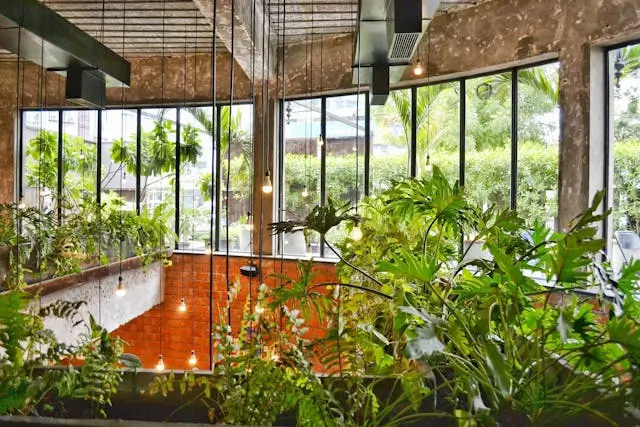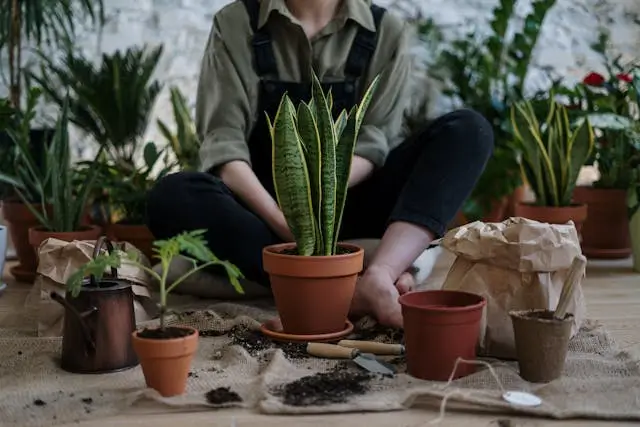Are you ready to transform your backyard into a thriving oasis of greenery and abundance? Whether you’re a seasoned green thumb or a complete novice, creating a productive garden is within your reach. With the right knowledge and a bit of elbow grease, you’ll be harvesting your own fresh produce and enjoying a beautiful outdoor space in no time.
Luckily, there are various essential tips and tricks that’ll help you cultivate a lush and productive garden. From soil preparation to plant selection, you’ll learn everything you need to know to get started on your gardening journey.
Choose the Perfect Location
Your garden’s success depends on the sunlight. Most vegetables require at least 6-8 hours of direct sunlight daily. So, scout your yard for an area that gets ample sun throughout the day.
Ideally, this spot should also be sheltered from strong winds that can damage delicate plants. Don’t worry if you have some shade – leafy greens like lettuce and spinach can happily grow there.
Next, consider the drainage. Waterlogged soil suffocates roots and invites diseases. Pick a spot with well-draining soil, or create raised beds if your soil is heavy clay. Raised beds also offer the bonus of easier access and weed control.
Other than the location, if you’re curious about the other gardening solutions you can consider, reach out to experts and service providers to learn more.
Know Your Soil
Healthy soil means healthy plants. Before planting anything, take a soil test. This readily available kit reveals your soil’s pH level (acidity) and nutrient content. Knowing this information lets you adjust the soil for optimal growing conditions. Most vegetables prefer slightly acidic soil with a pH of around 6.5. If your soil falls outside this range, you can adjust it with lime to raise pH or sulfur to reduce pH.
Don’t forget the importance of organic matter! It acts like a sponge, retaining moisture and nutrients your plants crave. Dig in compost, aged manure, or composted leaves to enrich your soil before planting.
Select the Right Plants
With a sunny spot and healthy soil prepped, it’s time for the fun part: choosing your plants! Here’s a tip: start small. A manageable garden allows you to focus on proper care and ensures success. Here are some tips for selecting vegetables for your productive garden:
Start with Fast-Growers
Opt for vegetables with a short maturity period, like lettuce (4-6 weeks), radishes (3-4 weeks), or bush beans (50-60 days). These varieties will give you a quick win and boost your confidence as a gardener.
Consider Your Climate and Planting Season
Research vegetables that thrive in your climate zone. Many seed packets and online resources provide planting guides specific to your region. Pay attention to these recommendations to ensure your plants experience optimal growing conditions during the right time of year.
Choose a Mix of Vegetables
Don’t limit yourself to just one type of produce! Plant a variety of vegetables to enjoy a harvest throughout the season. Include a mix of leafy greens, fruiting vegetables (tomatoes, peppers, eggplants), and root vegetables (carrots, beets, potatoes).
Think About Your Cooking Preferences
If you love salads, plant a variety of lettuce, kale, and spinach. If you’re a pasta enthusiast, grow tomatoes, peppers, and herbs like basil for homemade pasta sauce. Consider the vegetables you use most often in your kitchen and prioritize those in your garden bed.
As you gain experience, you can expand your garden with more challenging crops. In addition, most seed packets have clear instructions on planting times specific to your region. Pay attention to these recommendations to ensure your plants thrive during their optimal growing months.
Sow Seeds and Nurture Seedlings
There are two main ways to get your garden going: planting seeds directly outdoors or starting seedlings indoors. Planting seeds directly works well for vegetables like peas, beans, and lettuce, while slower-growing crops like tomatoes and peppers benefit from being started indoors a few weeks before the last frost for a head start on the season.
Using the right farming tools can make the process much easier. Whether sowing seeds directly or transplanting seedlings, proper spacing is crucial.
Each plant variety has specific spacing requirements to ensure proper air circulation and access to sunlight. Check the seed packet or plant label for guidance. Water your newly planted seeds or seedlings thoroughly and keep them moist until they establish themselves.
Water Wisely
Just like humans, plants need water to survive and thrive. But overwatering is a common mistake. Here’s the key: water deeply and infrequently, allowing the top inch of soil to dry out between waterings. This encourages roots to grow deep, searching for moisture, ultimately creating stronger plants.
The ideal time to water is early morning. Cooler temperatures minimize evaporation, allowing the water to reach the roots instead of baking off in the midday sun. On particularly hot days, you might need to water again in the evening, especially for container gardens that dry out faster.
Mulch Magic
Mulch is a gardener’s secret weapon. A layer of organic material like straw, shredded leaves, or wood chips spread around the base of your plants offers a multitude of benefits. It helps retain moisture in the soil, reducing the need for frequent watering. Additionally, mulch acts as a barrier, suppressing pesky weeds that compete with your plants for nutrients and water.
As mulch decomposes, it slowly releases nutrients into the soil, further enriching your garden bed. Apply a 2-3 inch layer of mulch around your plants, keeping it a few inches away from the base of the stem to prevent rot.
Encourage Pollinators
A thriving garden isn’t just about vegetables; it’s about creating a mini-ecosystem. Pollinators, like bees and butterflies, are essential for fruit and vegetable production. Planting colorful flowers that bloom throughout the season attracts these beneficial creatures, ensuring a bountiful harvest.
Some excellent pollinator-attracting flowers include:
Sunflowers
These cheerful giants provide pollen and nectar for a variety of pollinators.
Zinnias
These vibrant blooms come in a wide range of colors and are easy to grow from seed.
Cosmos
These airy flowers bloom prolifically throughout the summer and attract butterflies and bees.
Lavender
This fragrant herb not only attracts pollinators but also adds a delightful scent to your garden.
Plant your pollinator-friendly flowers in a sunny spot near your vegetable patch. You can even dedicate a small section of your garden solely to these beneficial blooms.
Embrace the Power of Compost
Composting isn’t just about reducing kitchen waste; it’s about creating a nutrient-rich amendment for your garden. Kitchen scraps, yard trimmings, and even coffee grounds can be transformed into “black gold” for your plants. Here’s how to get started with composting:
Set Up a Compost Bin
There are various composting methods, from simple bins to tumblers. Choose a system that suits your space and needs.
Learn What to Compost
Food scraps (fruit and vegetable peels, eggshells), coffee grounds, and yard trimmings are excellent composting materials. Avoid meat scraps, dairy products, and diseased plants, as these can attract pests and decompose slowly.
Maintain a Healthy Balance
For optimal decomposition, your compost pile needs a balance of “brown” (carbon-rich) and “green” (nitrogen-rich) materials. Brown materials like shredded leaves and cardboard provide structure, while green materials like vegetable scraps and grass clippings provide nitrogen, which fuels the decomposition process.
Composting might seem daunting at first, but it’s a simple and rewarding way to create a sustainable cycle in your garden. The rich compost you create will nourish your plants, reduce waste, and save you money on store-bought fertilizers.
Rotating Crops
Crop rotation prevents soil depletion and reduces pest and disease problems. Avoid planting the same family of plants in the same spot year after year.
For example, don’t plant tomatoes in the same place you planted peppers the previous year. Instead, follow a three-year rotation plan, moving crops to different parts of your garden.
Addressing Pests and Diseases
Unfortunately, no garden is entirely pest and disease-free. However, there are ways to keep these problems at bay and minimize damage. Here are some proactive measures:
Practice Crop Rotation
Planting different vegetable families in the same spot each year disrupts pest life cycles and helps prevent disease buildup in the soil.
Choose Disease-Resistant Varieties
Many seed companies offer vegetable varieties bred to resist common diseases. Look for these designations when choosing seeds or seedlings.
Encourage Beneficial Insects
Ladybugs, lacewings, and praying mantises are natural predators of common garden pests. Planting flowers that attract these beneficial insects helps create a balanced ecosystem in your garden.
Monitor Your Plants Regularly
Early detection is key when dealing with pests and diseases. Regularly inspect your plants for signs of trouble, like chewed leaves, discoloration, or powdery mildew.
If you do encounter a pest or disease problem, there are several organic control methods available. You can use insecticidal soap, neem oil spray, or even encourage natural predators like ladybugs to help manage the issue.
Conclusion
Creating a lush and productive garden is a rewarding journey that combines science, art, and a bit of patience. By following these tips and techniques, you’ll be well on your way to growing a thriving garden that provides fresh, healthy produce and a beautiful outdoor space to enjoy. Remember, every garden is unique, and part of the joy of gardening is learning what works best in your specific environment. So, get your hands dirty, stay curious, and watch your garden grow!’

